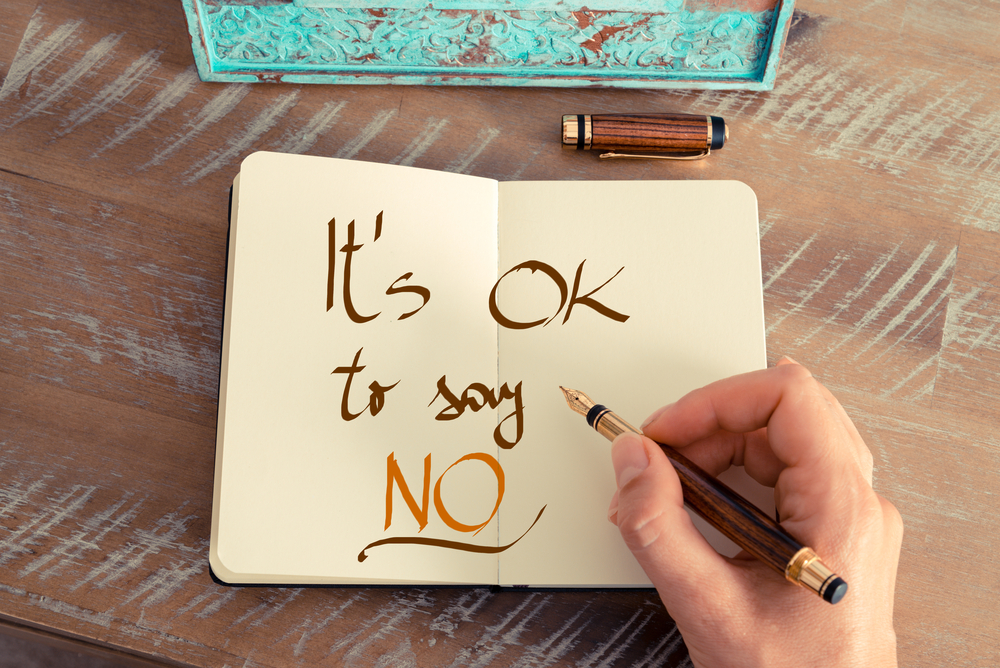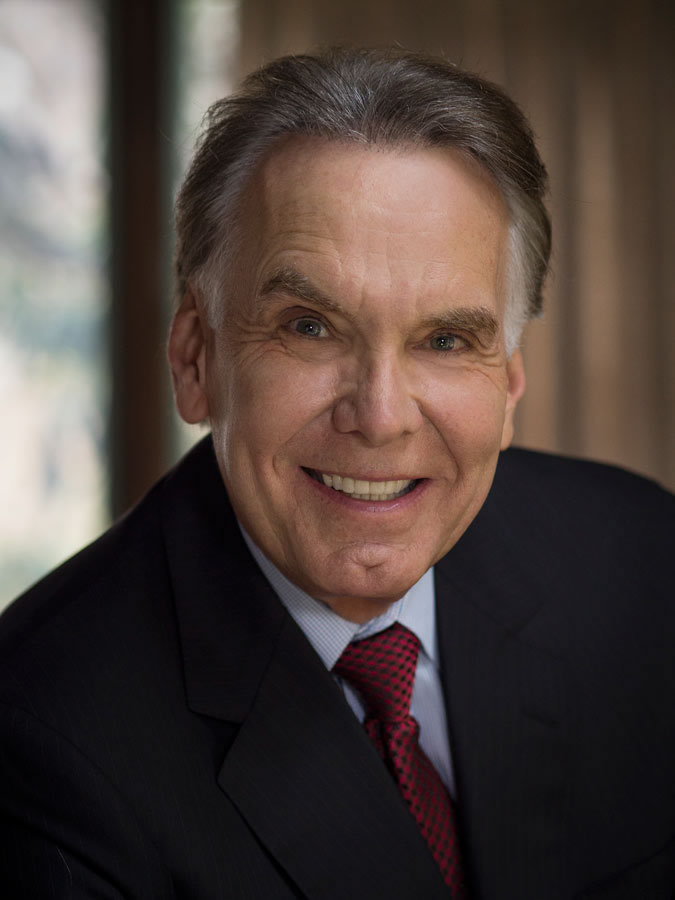5 Strategies On How To Say “No” Without Sounding Like a Jerk
It’s only by saying NO that you can concentrate on the things that are really important.
– Steve Jobs
I was about to begin an article on relationships when I received a text from a good friend of mine saying he found it very difficult to say “no” when someone requests a favor. I certainly understand that situation. I’ve been there as I’m sure most of you have been.
I’ve had to develop my own strategies on how to say “no” without sounding like a jerk. It requires me to truly know my values.

Learning how to say “no” is not only an important social skill, but also the ultimate productivity hack
Other than those I have embraced as family, I’ve said ‘no’ to lending money because there is very seldom a good outcome. I prefer to just ‘give’ what may be needed. I’ve said ‘no’ to being on boards because my creative writing time is a priority. The same holds true for free coaching. People will, through their need, attempt to shame if they don’t get what they want.
Saying No – Is It For Everyone?
Why are some people so resistant to saying ‘no’? The main reason is fear that others will perceive you as selfish or be hurt, disappointed angry or just annoyed. Or you will be perceived as arrogant, rude, or unhelpful. Perhaps you fear that others won’t be there for you if you say no to them.
Yet saying ‘no’ is not only an important social skill, but also the ultimate productivity hack. Saying no retains the most important asset in life: your time.
When you say no, you are only saying no to one option.
When you say yes, you are saying no to every other option.-James Clear
A healthy life requires you to set or strengthen your boundaries. Take a few minutes to challenge your beliefs about saying ‘no’. Keep in mind that ‘guilt’ is just another form of fear. And, if you feel guilt, you need to work on your boundaries. Your needs are just as important as other’s needs.
’No’ is a complete sentence. ‘No, thank you’ or ‘No, thank you, I won’t be able to’.
Say it, don’t apologize, then shut up.-Annie Lamott
Here Are 5 Strategies to Help You Say “No”
The following strategies will support you to set boundaries by learning to say ‘no’. Every situation is different so you may want to combine a few of these strategies until your discomfort with saying ‘no’ becomes one of your mental tools.
British economist, author of The Undercover Economist and podcaster Tim Harford, has an interesting perspective on the subject. He writes, “Every time we say yes to a request, we are also saying no to anything else we might accomplish with the time.”
So, it stands to reason that saying no saves you time in the future.
Time is currency. You either invest in it properly or squander it.
1. Do a reality check by asking yourself questions
Tim provides an insightful observation: One trick is to ask, “If I do this today, would I agree to it?”
Another powerful question is “Does this excite me?” If it does, go for it. If it doesn’t, the answer is “no.”
Here are a few more questions for you to ponder:
- Does the inability to say ‘no’ affect the quality of your life?
- Do you feel close to burning out because you have too many obligations?
- Do you feel overcommitted?
- Do the things you say ‘yes’ to improve the quality of your life and support those around you?
2. Prepare yourself for resistance
Even when you are polite and thoughtful, some people get angry at hearing a “no.” The reality is that boundary setting will often trigger emotions. Always keep in mind that setting boundaries will, in the long run, improve the quality of your relationships.
If you do not respect the integrity of your personal boundaries or fear someone’s reaction, you do yourself harm. Over time, stifling your resentment and bitterness can accumulate. The result can be disastrous for your relationships.
One key to successful relationships is learning to say no without guilt, so that you can say yes without resentment.
– Bill Crawford
3. Be responsible for your self-care
Self-compassion is the practice of showing yourself the same compassion you would show someone you care about in moments of failure or difficulty. It allows us to recognize our limitations and flaws while showing ourselves kindness as we accept them or work through them.
My personal belief is that I must take care of myself to take care of others. To effectively help others, you must first look after your own physical, emotional, and spiritual well-being. Every person deserves to have healthy relationships with others, but they also deserve to have healthy relationships with themselves.
4. Put yourself in others’ shoes
This is the major step to genuinely connecting with others.
The reality is that many people in the fear-based climate of today are consumed about the ‘what’s in it for me’ attitude. They are often self-absorbed and blind to other’s needs.
“Seek first to understand and then to be understood.”
– Stephen R. Covey, The 7 Habits of Highly Effective People
This is where the power of your imagination is extremely effective.
Take a moment to IMAGINE what’s going on for them. Do your best to see the situation from the other person’s perspective. Consider how your saying “no” would impact them, not to refrain from saying no but rather to attempt to walk in another’s shoes. Only then can you communicate with kindness and empathy.
Examples: “I know how hard it is for you. I’ve been there myself.” It sounds like you’re under a lot of pressure right now.” “I know you were really looking forward to my helping.”
Communicating with kindness and integrity takes practice and requires self-awareness and, to move past people pleasing. Remember, the barriers to saying no always include fear, and fear includes the most dangerous and manipulative fear of all, GUILT.
5. Communicate with kindness, gratitude, and empathy
Allow yourself to be vulnerable: Once you have acknowledged that you understand what is going on with the other person, you can share what’s going on with you. Explaining your situation/point of view opens empathetic communication.
Show gratitude: Thank the individual or group for thinking of you. Thank them for their enthusiasm. A ‘thank you’ goes a long way to lesson the negative impact of your saying ‘no’.
Explain your ‘why’: Clearly communicate the reasons why saying “yes” would have a negative impact on time, your health, family, productivity, creativity, values, or your relationships.
You can learn to say ‘no’ skillfully and wisely, you can create what you want, protect what you value, and change what doesn’t work.
– William Ury, The Power of a Positive No.
6. If appropriate, propose an alternate solution
You will be surprised how often, with a little brainstorming, you can propose an alternate solution. And, trying to help shows you care and can solidify a relationship.
Think about the people you know who might be able to help. I find it helpful to go through my contacts and often put people in touch with someone from my network.
Just saying yes because you can’t bear the short-term pain of saying no is not going to help you do the work.
– Seth Godin
Whether it involves your workplace or personal relationships, the skill of learning how to say “No” without sounding like a jerk will reduce your stress and enhance the quality of your life. You will indeed learn to live an exceptional life.
IMAGINE THAT!
James Mapes is a speaker, best-selling author, life-coach, award winning performer and actor

James Mapes is the founder of Quantum Leap Thinking™, creator of The Transformational Coach™, expert on the psychology of “applied imagination,” best-selling author, highly acclaimed business speaker, consultant, seminar leader and personal excellence coach.
